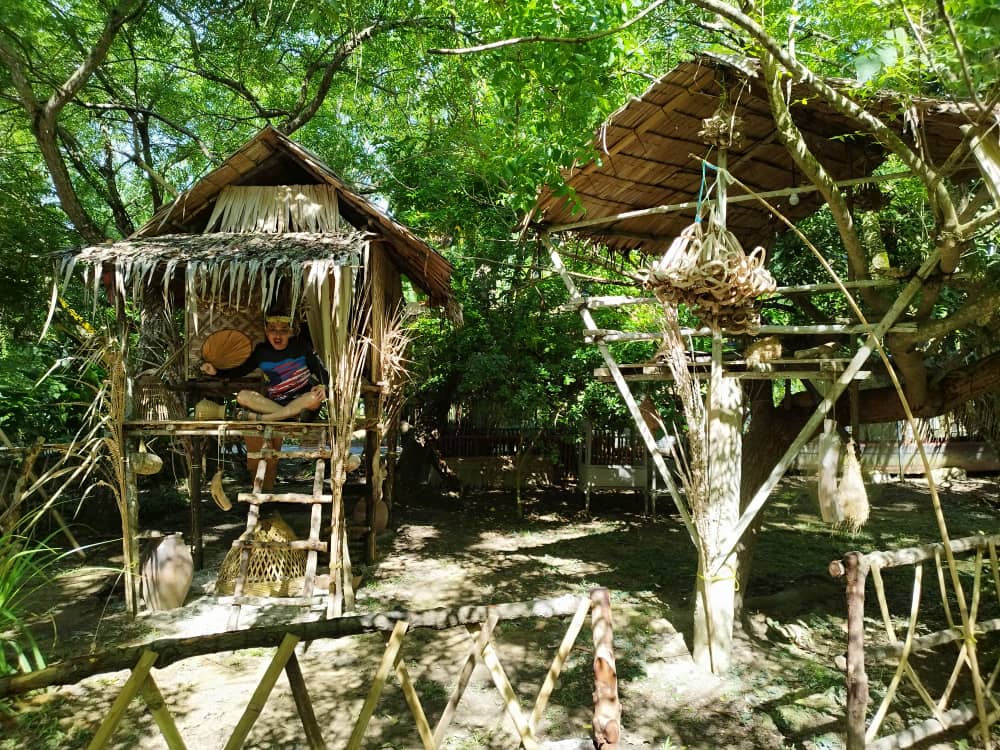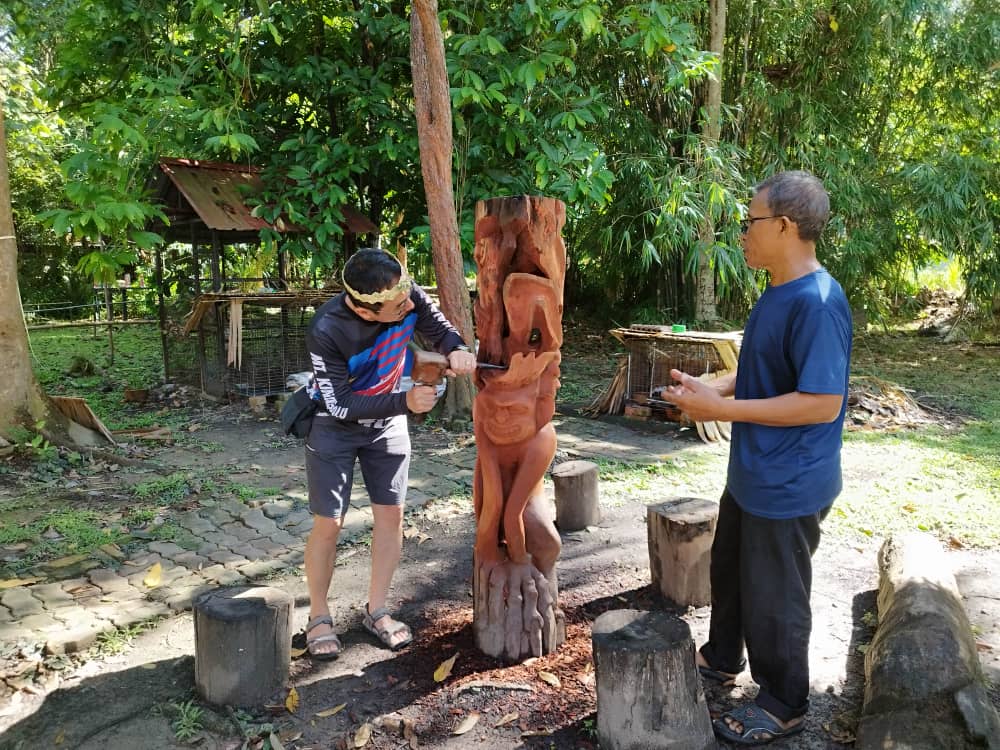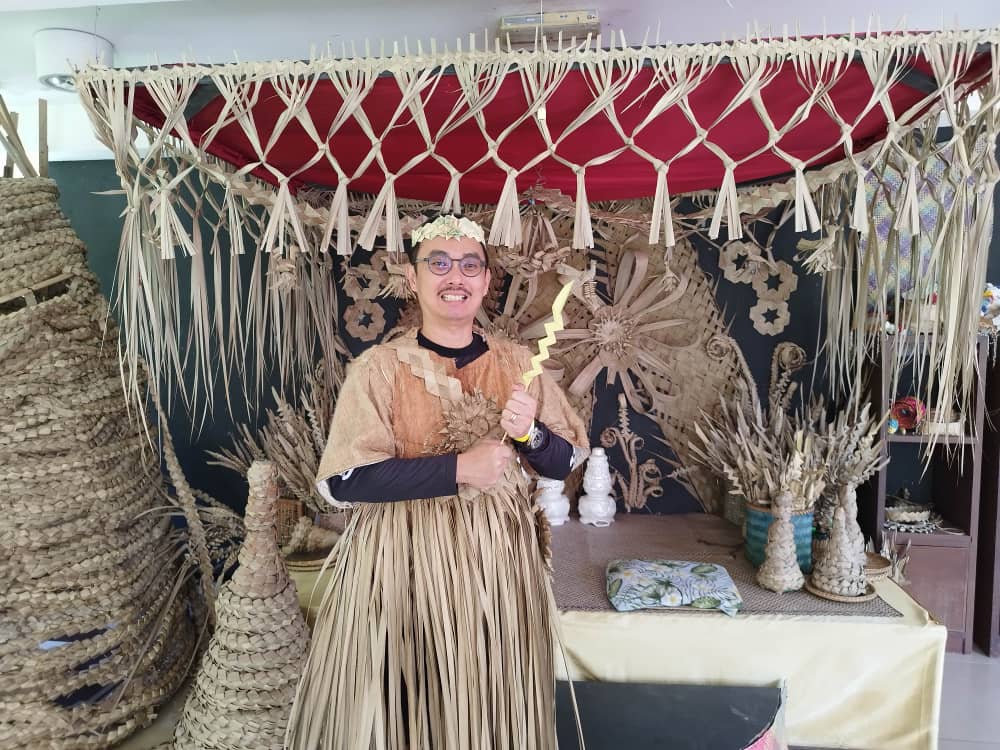
by Nic, thehapi8wanderer Ang
Have you been to the Mah Meri Orang Asli Cultural Village in Pulau Carey, just south of Port Klang and north of Banting? I tell you – it’s a must visit if you haven’t been as it exposes us to another world, of the Mah Meri folks, to be exact.
The ancient Mah Meri tribe, sometimes referred to as the ‘Masked Men of Malaysia’, is one of 18 indigenous communities living in Peninsula Malaysia.They are also widely regarded as highly-skilled mask makers.
I just spent a memorable weekend with my family at Pulau Carey, which is accessible by a bridge across the Langat River. We stayed at Amverton Cove Golf & Island Resort. The island has palm oil plantations owned by SD Guthrie (formerly Sime Darby Plantations), a plantation group that has been in Malaysia for amost 115 years.
While the kids splashed their time away at the resort’s Riverine Theme Park, I chose to check out the Mah Meri Cultural Village, with my wife and brother, which is just a five minutes’ drive away from the hotel.
It was our first time here. After having paid the entrance fee of RM30 each, Diana, who was manning the registration counter, explained that the fees covered entry to the Mah Meri Gallery, taking part in Nipah leaf origami arrangements, dressing up in traditional costumes made of tree barks, visiting the UNESCO Gallery, playing traditional games, trying our hand at traditional attap weaving and witnessing a wood carving demonstration.
Adorned with a Nipah leaf headgear which Diana informed is the Mah Meri way of welcoming guests to the village, I stepped into the cultural village excitedly. The first stop was the Rumah Moyang, which is an ancestral shrine located on the left side of the pathway.
I then tried my hands at a hand-crafted catapult to knock off a row of tin cans. But even after three attempts, I didn’t hit any. Result was zero. It’s definitely not as easy as it looks!
Uncle Diaman was in the midst of carving a motem pole (similar to a totem pole) when I made my way to the next attraction. This intricately carved hardwood is made from nyireh batu, a rare, reddish swamp hardwood. The pole is replete with votive wooden sculptures. It takes about six months to complete and he’s willing to let it go for RM35,000.

Being an animist, the carver translates the images received in his dreams into works of art. Information about the carver and the history of the art are displayed on a wall behind each carving.
Further ahead, my wife got excited when she saw a few Mah Meri girls folding origami from nipah leaves. Taking part in the process, she learnt how to fold the leaf around the stalk, to create a handicraft for herself.
Living in the jungle, the tribe made use of wood bark to create a form of shirt, with dried nipah leaves used to create their pants or skirts.
I had an enjoyable hour of appreciating the life of the Mah Meri folks. Please visit and support them so that their traditions and culture can be retained for generations to come. While many of the Orang Asli folks have assimilated into modern life, with jobs in nearby plantations and farms, much care has been taken to ensure that their ancient rituals and customs are documented and preserved.

The writer in a Mah Meri traditional costume
Genuine crafts by the Mah Meri purchased at the Cultural Village or National Museum bear the United Nations Educational, Scientific and Cultural Organisation’s (UNESCO) Seal of Excellence and come with a certificate of authenticity. Each piece has its own story that is related to their ancestral legends.